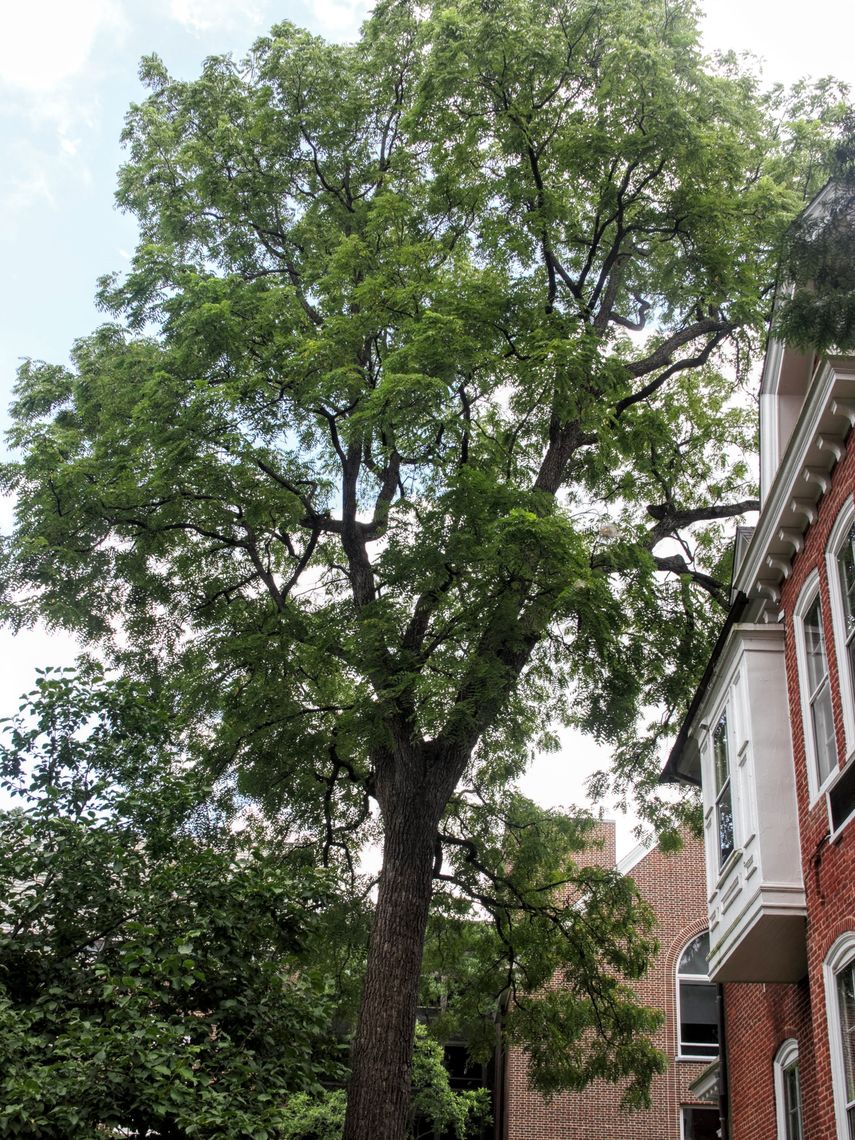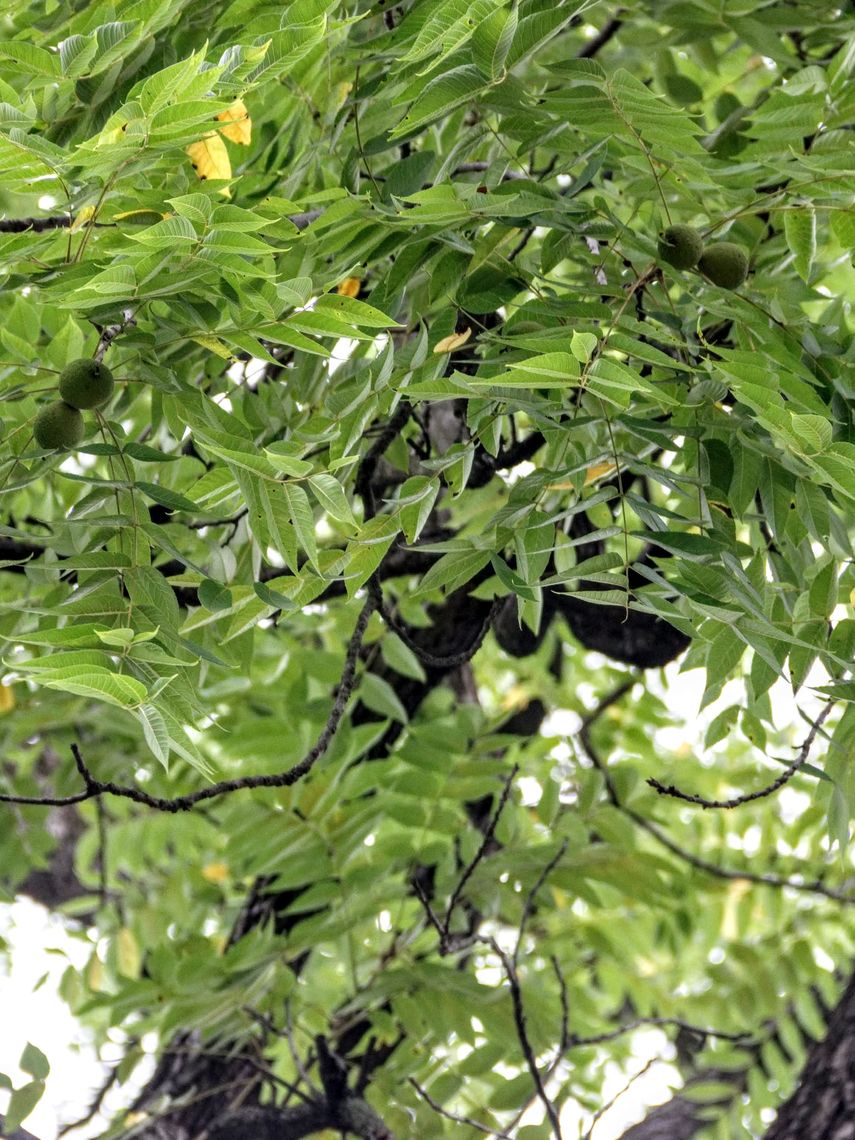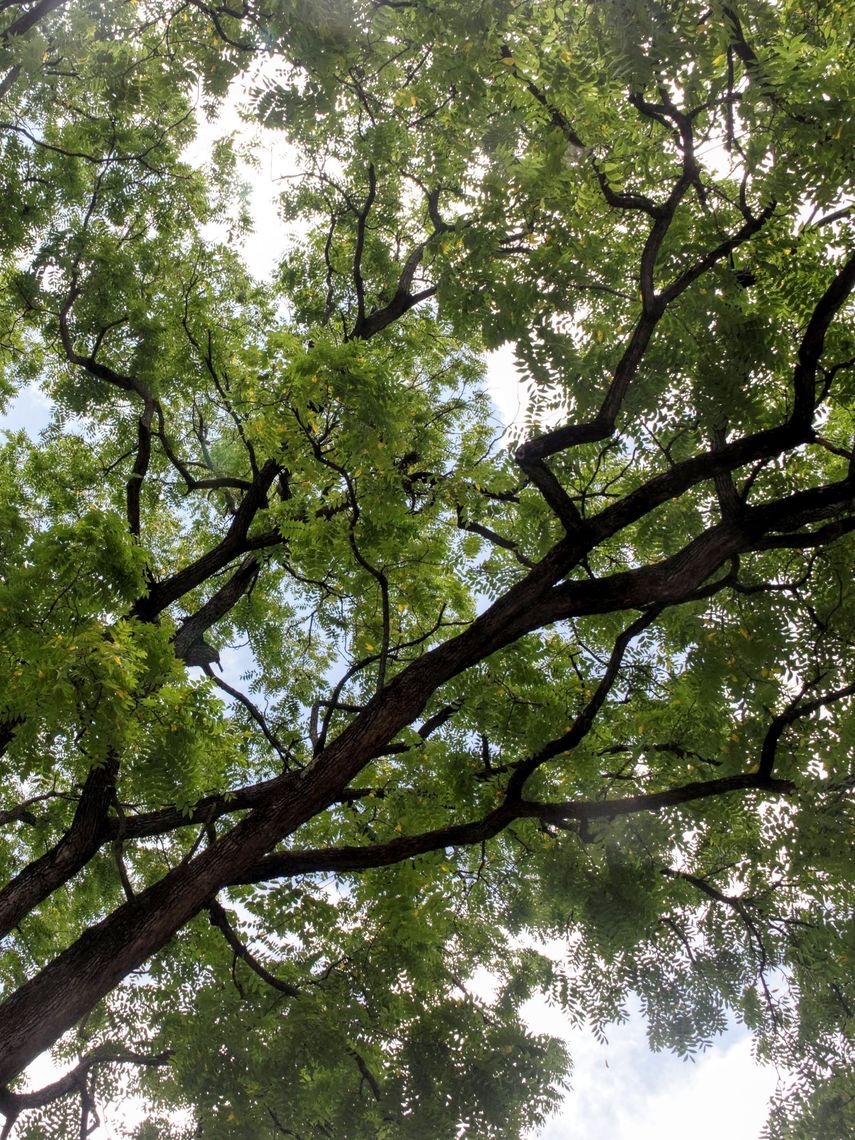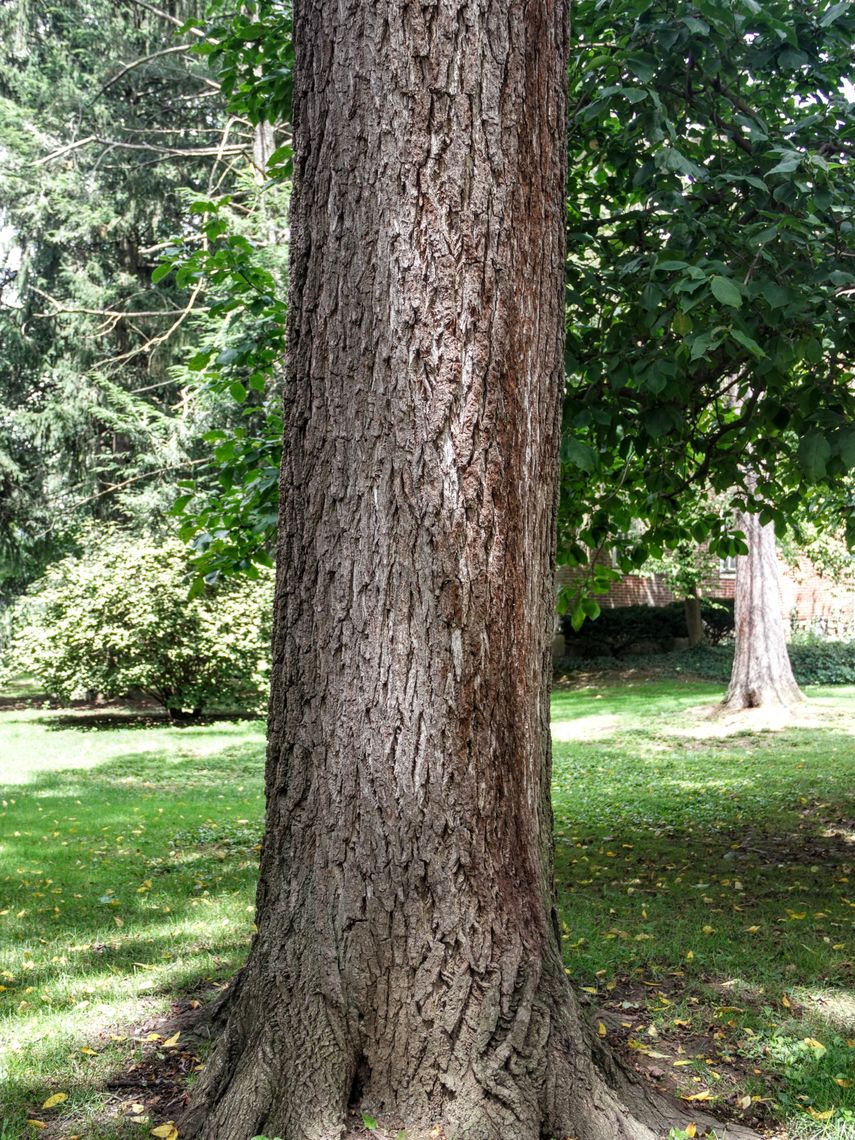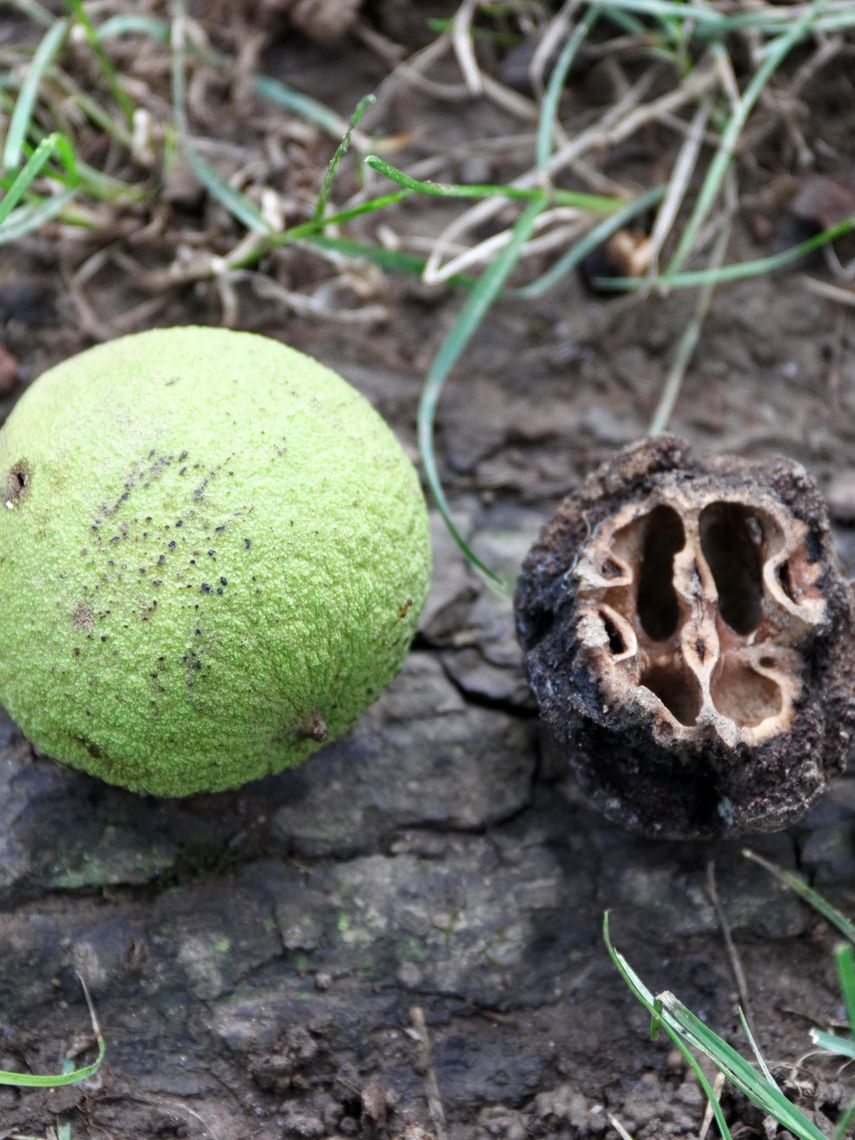Black Walnut (Juglans nigra)
The black walnut tree produces the walnuts that are commonly sold commercially and eaten. The nuts are encased in large, circular, green-yellow husks and ripen in late summer to fall. During this time, these husks fall so frequently that it can actually be dangerous to stand underneath the tree. The tree's leaves are made up of many smaller, pointed, oval leaflets. Its bark is dark gray and has a diamond pattern. Black walnut wood is also often used to make furniture. This tree attracts the banded hairstreak butterfly.
Family: Juglandaceae (Walnut)
Characteristics: The leaves are odd-pinnate compound (leaflets attached in pairs along stem, with one on top), with 13-23 oblong, yellow-green, and strongly aromatic leaflets, which are each 2-5 inches long. These leaves appear in late spring and drop in early fall. Males flowers appear as drooping, hairy catkins, and female flowers appear as short spikes. Female flowers give way to edible nuts which are encased in a round, green-yellow husk. In the late summer to fall, this fruit ripens and falls to the ground. Bark is dark gray, sharply ridged, and forms a diamond pattern. Mature trees have long trunks, and often have no lower branches. This tree is upright spreading, and has an oval to rounded shape. It grows 50-75 feet high and wide.
Foliage: Deciduous (leaves lost seasonally)
Geographic Origin: Eastern United States (native)
Cultivation Notes: The leaves are odd-pinnate compound (leaflets attached in pairs along stem, with one on top) with 13-23 oblong, yellow-green, and strongly aromatic leaflets which are each 2-5 inches long. These leaves appear in late spring and drop in early fall. Males flowers appear as drooping, hairy catkins and female flowers appear as short spikes. Female flowers give way to edible nuts which are encased in a round, green-yellow husk. In the late summer to fall, this fruit ripens and falls to the ground. Bark is dark gray, sharply ridged, and forms a diamond pattern. Mature trees have long trunks and often have no lower branches. This tree is upright spreading and has an oval to rounded shape. It grows 50-75 feet high and wide.
Number on Campus: 2
Sources: Dirr, Morton Arboretum, Missouri Botanical Garden

